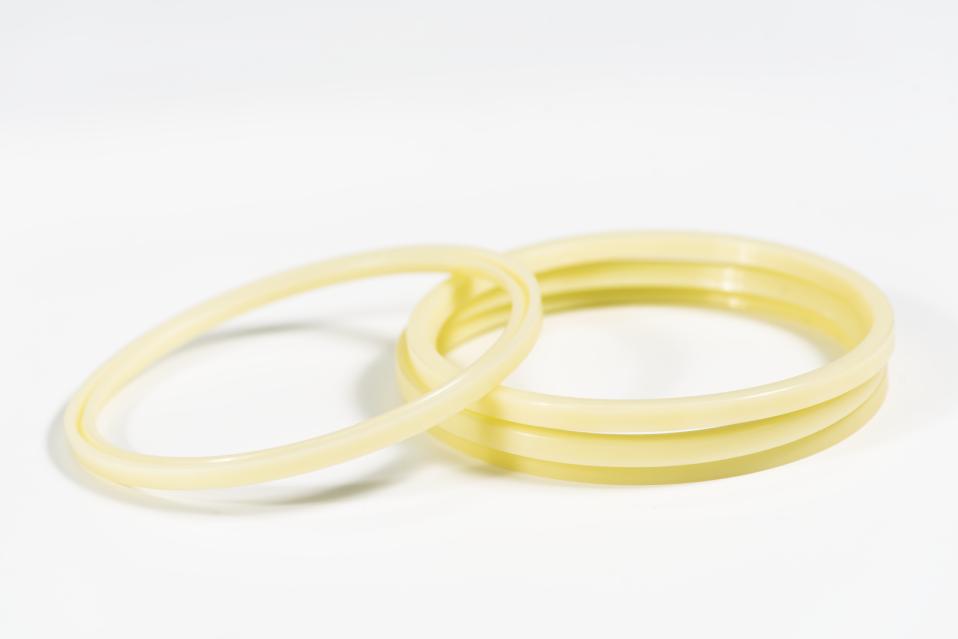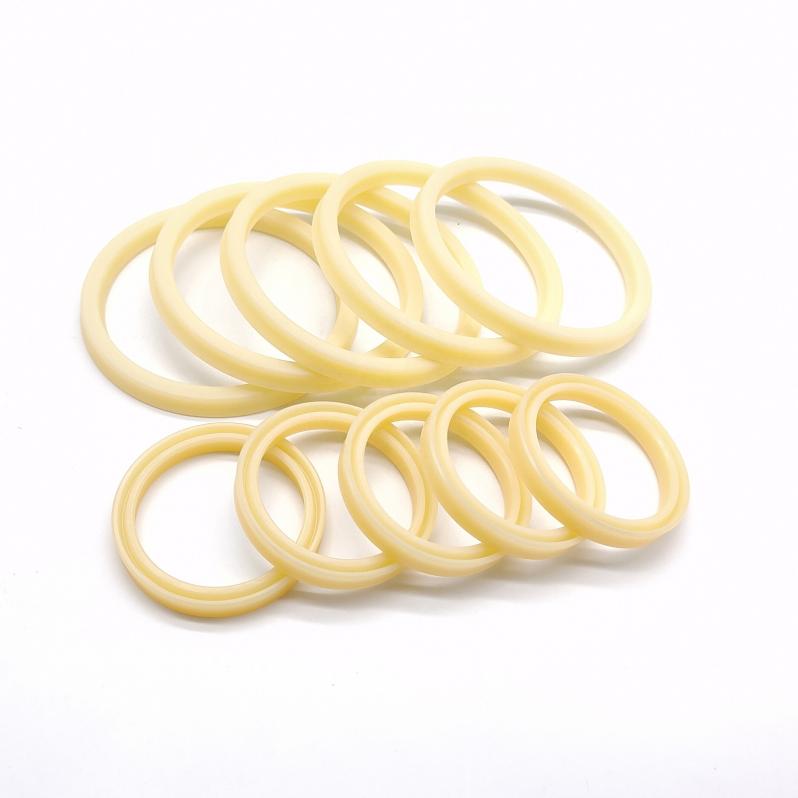Hydraulic systems play a crucial role in various industrial applications, relying on the seamless movement of fluid to generate, control, and transmit power. Integral to these systems are seals, which prevent fluid leakage, ensuring efficiency and longevity. Among these, IDI rod seals are particularly significant due to their ability to maintain optimal performance under high pressure and dynamic conditions. Our company is dedicated to producing top-quality IDI rod seals, exporting them globally to regions such as Europe, America, and Australia. We prioritize scientific management, innovation, and superior service to foster long-term, mutually beneficial partnerships worldwide. Our commitment to excellence, competitive pricing, and timely delivery aims to create new value for our clients.

Description of IDI Rod Seals
Definition and Characteristics of IDI Rod Seals
IDI rod seals, also known as internal double lip rod seals, are essential components in hydraulic systems. Their primary function is to prevent fluid leakage by maintaining a secure seal around the hydraulic rod, even amidst varying pressures and temperatures. The double lip configuration enhances sealing efficiency by accommodating the rod's movement, reducing wear and tear, and ensuring sustained reliability. This design is crucial for maintaining system efficiency and protecting against contamination.
Material Composition
IDI rod seals are manufactured from advanced elastomers and thermoplastic materials, selected for their superior mechanical properties and resistance to demanding conditions. Typical materials include polyurethane, Nitrile Rubber (NBR), Fluorocarbon Rubber (FKM), and Polytetrafluoroethylene (PTFE). These materials are chosen for their ability to endure high pressures, temperature fluctuations, and diverse hydraulic fluids, ensuring flexibility, strength, and durability.
Common Designs and Variations
IDI rod seals come in various designs to meet different application needs. The standard design features a primary sealing lip and a secondary lip to enhance sealing performance. Other variations include single lip designs that reduce friction and double-acting seals for sealing in both directions. Some designs also integrate additional elements like anti-extrusion rings or backup rings to improve performance under high-pressure conditions.
Role of IDI Rod Seals in Hydraulic Systems
Functionality: How IDI Rod Seals Work
IDI rod seals work by creating a tight seal around the hydraulic rod, preventing fluid from leaking out and contaminants from entering the system. The primary sealing lip acts as the main barrier against fluid leakage, while the secondary lip provides additional sealing support and maintains effectiveness during dynamic conditions. The flexible material conforms to the rod's surface, ensuring continuous and effective sealing throughout the rod's movement.
Application Contexts: Where IDI Rod Seals Are Typically Used
IDI rod seals are utilized across a wide range of hydraulic applications, including industrial machinery, automotive systems, agricultural equipment, and construction machinery. They are particularly important in high-pressure environments like hydraulic cylinders, where reliable sealing is crucial for maintaining system integrity and performance. Their adaptability makes them suitable for both static and dynamic applications.
Benefits of Using IDI Rod Seals in Various Applications
Employing IDI rod seals offers numerous benefits, such as enhanced system efficiency by preventing fluid leakage that can lead to power loss and contamination. Their robust design and material selection extend the lifespan of hydraulic systems, reducing maintenance needs and downtime. Their capability to perform under high pressure and temperature conditions makes them ideal for demanding applications.
Performance Characteristics
Mechanical Properties
IDI rod seals possess outstanding mechanical properties, including the capacity to withstand high pressures of up to several hundred bar and function effectively within a broad temperature range, typically from -30°C to +120°C. These properties ensure that the seals maintain their performance and integrity even under extreme operating conditions.
Durability and Lifespan
The durability and lifespan of IDI rod seals are influenced by their design and material composition. High-quality seals can last several years, even in challenging environments. The double lip design minimizes wear and tear, while advanced materials resist abrasion, extrusion, and chemical degradation, contributing to their extended service life.
Resistance to Different Environments
IDI rod seals are engineered to withstand various environmental factors, including exposure to hydraulic fluids, chemicals, and abrasives. Materials such as PTFE and FKM offer excellent chemical resistance, while polyurethane provides high abrasion resistance. This versatility ensures reliable performance across diverse and harsh environments.
Challenges and Limitations
Common Failure Modes of IDI Rod Seals
IDI rod seals can experience common failure modes such as extrusion, where high pressure forces the seal material out of the sealing area, and chemical degradation from exposure to incompatible fluids. Additionally, wear and tear from friction and misalignment can lead to seal failure, highlighting the need for regular inspections and maintenance.
Maintenance Issues
Maintaining IDI rod seals requires routine inspection for signs of wear, damage, or degradation. Replacing worn seals is crucial to avoid system failures. Proper lubrication and contamination prevention are key maintenance practices that can extend the seals' lifespan and ensure system efficiency.
Environmental and Operational Limitations
IDI rod seals face limitations under extreme environmental conditions, such as very high or low temperatures beyond their material capabilities, or exposure to aggressive chemicals that may degrade the seal. Operational limitations include the necessity for precise installation and alignment to avoid premature wear and ensure optimal performance.
Technological Advances
Recent Developments in Material Science
Recent advances in material science have led to the creation of new elastomers and thermoplastics with enhanced properties, such as improved temperature resistance, chemical stability, and flexibility. These developments have significantly enhanced the performance and durability of IDI rod seals in challenging applications.
Innovations in Seal Design and Functionality
Innovations in seal design include multi-lip and hybrid seals that combine features from different designs to improve sealing performance and reduce friction. Advances in manufacturing techniques, such as precision molding and additive manufacturing, have also led to the production of more reliable and efficient seals.
Future Trends in Seal Technology
Future trends in seal technology are expected to focus on further enhancing material properties and seal designs to meet the evolving demands of modern hydraulic systems. Emerging innovations include smart seals with embedded sensors for real-time monitoring and predictive maintenance, aimed at boosting system reliability and reducing downtime.
Testing and Quality Assurance
Standard Testing Procedures for Assessing Performance
Standard testing procedures for IDI rod seals involve pressure testing, temperature cycling, and durability testing to assess their performance under various conditions. These tests ensure that seals meet required specifications and can handle the demands of their intended applications.
Quality Standards and Certification Processes
Quality standards for IDI rod seals are defined by organizations such as ISO and ASTM, which set guidelines for material properties, manufacturing processes, and performance criteria. Certification processes involve rigorous testing and inspection to ensure compliance with these standards, guaranteeing the reliability and safety of the seals.
Economic and Environmental Impact
Cost-Effectiveness of Using High-Quality IDI Rod Seals
High-quality IDI rod seals are cost-effective due to their extended lifespan and reduced maintenance requirements. Investing in superior seals lowers the risk of system failures and downtime, resulting in lower overall operational costs and improved productivity.
Environmental Considerations
IDI rod seals contribute to environmental sustainability by preventing fluid leakage, which reduces contamination and waste. Their durability minimizes the need for frequent replacements, leading to less waste generation. Additionally, advancements in seal materials and manufacturing processes are increasingly aimed at reducing environmental impact.
Impact on System Efficiency and Longevity
High-quality IDI rod seals improve system efficiency by maintaining effective sealing performance, preventing fluid loss, and ensuring smooth operation. Their robust design and material properties enhance the longevity of hydraulic systems, reducing the frequency of repairs and replacements, and supporting sustainable industrial practices.
Final Words
IDI rod seals are essential for hydraulic systems, playing a crucial role in maintaining efficiency and reliability by preventing fluid leakage and contamination. Their double-lip design enables them to handle rod movement while withstanding high pressure and temperature fluctuations. Constructed from advanced elastomers and thermoplastics, these seals are known for their exceptional mechanical properties, durability, and resistance to challenging environments. Recent advancements in materials and design have further improved their performance and lifespan. Although challenges such as wear and chemical degradation exist, proper maintenance and accurate installation can address these issues effectively. The cost-efficiency and environmental advantages of high-quality IDI rod seals make them vital for various industrial applications, enhancing system efficiency, promoting sustainability, and lowering operational costs.

